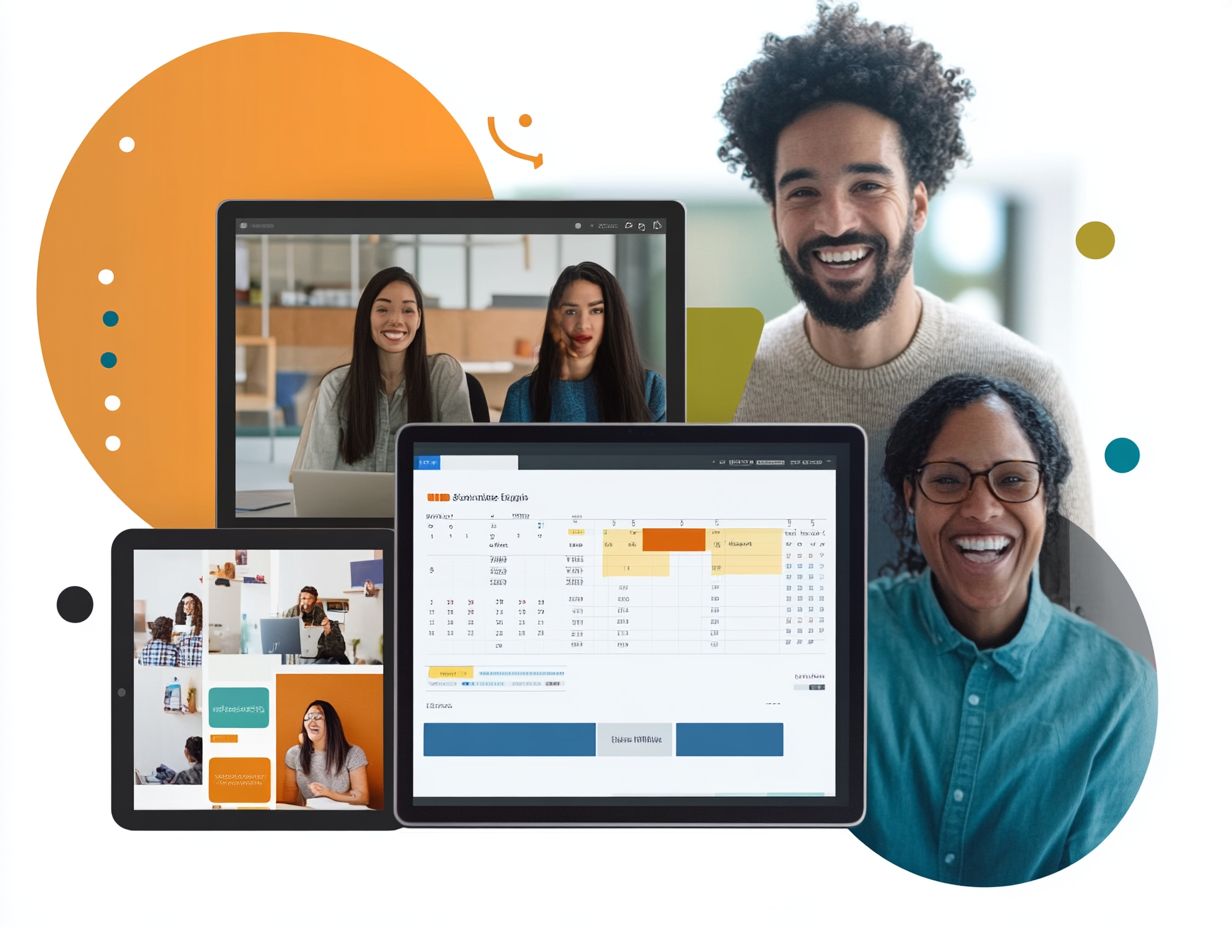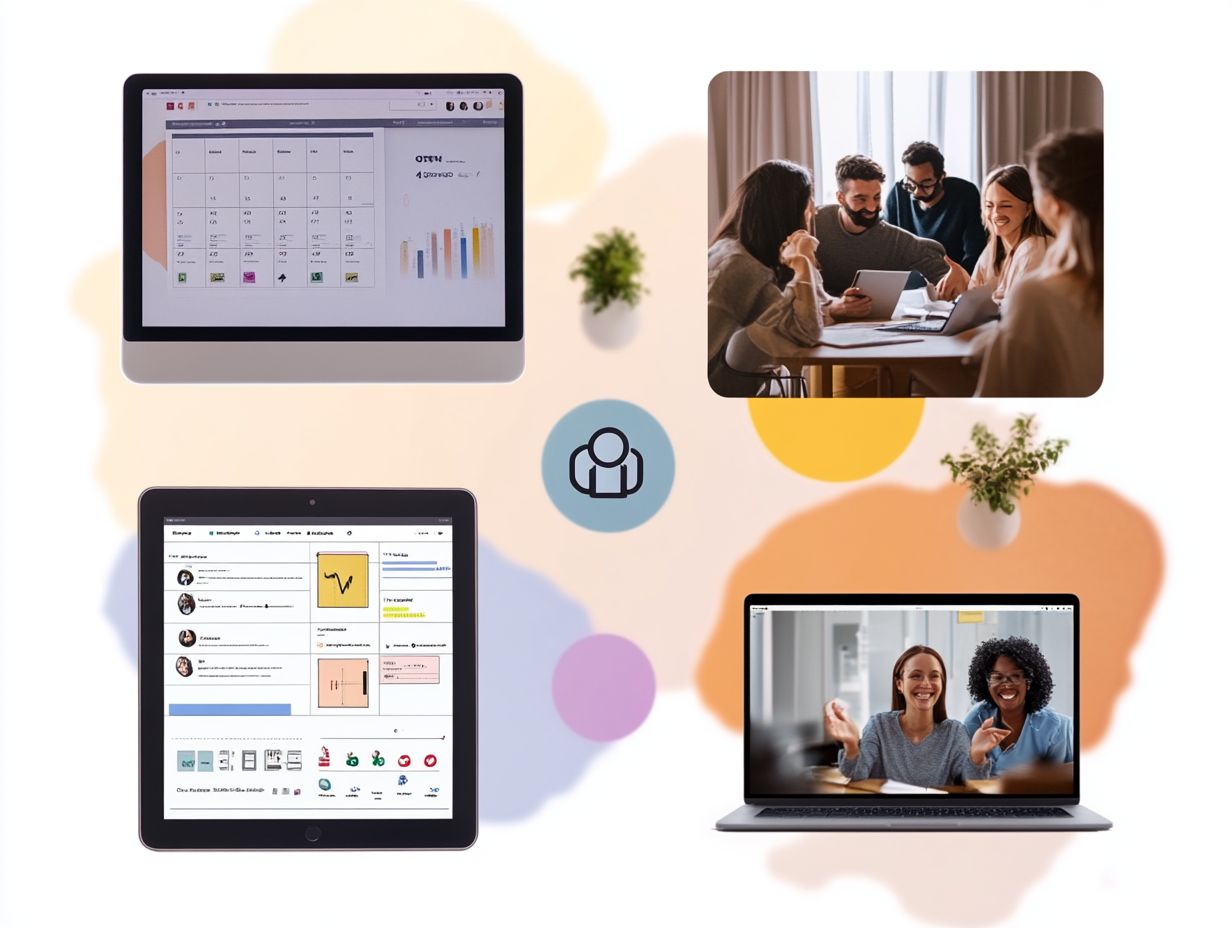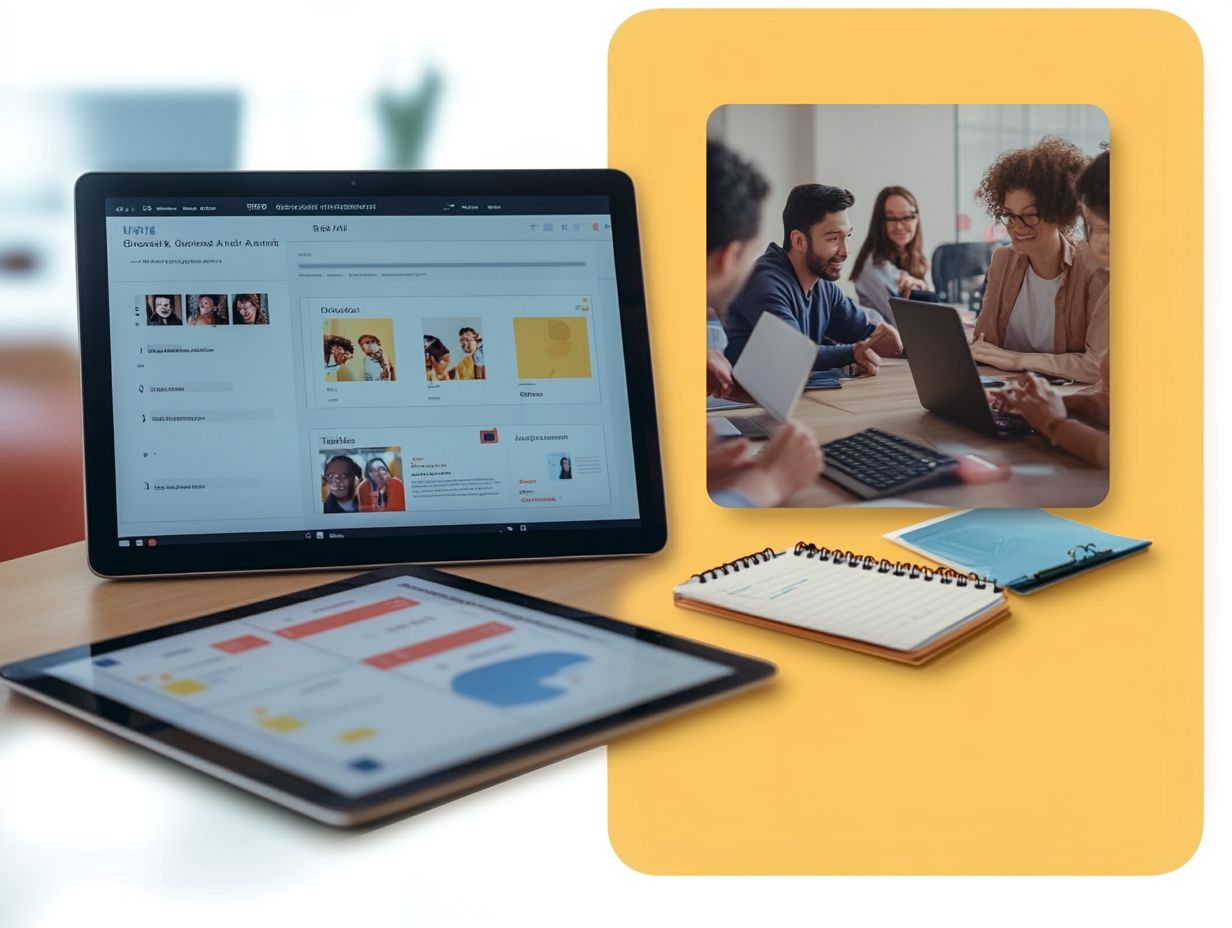5 Tools for Streamlining the Onboarding Process
In today s fast-paced work environment, an efficient onboarding process is essential for setting new hires up for success. With the right tools at your disposal, you can streamline this critical phase, ensuring smoother transitions and heightened productivity.
This article delves into five key technologies automated onboarding software, digital document management systems, online training platforms, project management tools, and communication and collaboration tools that can elevate your onboarding experience.
Discover how these resources can tackle common challenges, enhance engagement, and facilitate seamless integration for your new team members.
Contents
- Key Takeaways:
- 1. Automated Onboarding Software
- 2. Digital Document Management Systems
- 3. Online Training Platforms
- 4. Project Management Tools
- 5. Communication and Collaboration Tools
- What Is the Onboarding Process and Why Is It Important?
- What Are the Common Challenges with the Onboarding Process?
- How Can Automated Onboarding Software Help?
- What Are the Benefits of Using Digital Document Management Systems?
- How Can Online Training Platforms Improve the Onboarding Process?
- What Role Do Project Management Tools Play in Onboarding?
- Why Is Communication and Collaboration Important during Onboarding?
- How Can These Tools Be Integrated for a Seamless Onboarding Experience?
- What Are the Different Types of Onboarding Tools Available?
- How Can a Business Choose the Right Onboarding Tools for Their Needs?
- What Are the Costs Associated with Onboarding Tools?
- Frequently Asked Questions
- What are the 5 tools for streamlining the onboarding process?
- How can employee onboarding software help streamline the onboarding process?
- Why is electronic signature software important for the onboarding process?
- In what ways can HR database software improve the onboarding process?
- How can video conferencing software benefit the onboarding process?
- Why is project management software useful for streamlining the onboarding process?
Key Takeaways:

- Streamline onboarding with automated software for a more effective experience.
- Use digital document management systems to cut paperwork and stay organized.
- Incorporate online training platforms to boost learning and development.
1. Automated Onboarding Software
Automated onboarding software marks a transformative evolution in the onboarding landscape. It streamlines the process for new hires while enhancing their experience and ensuring compliance and efficiency.
As you embrace technology like AI and cloud-based platforms, your organization can implement solutions that promote knowledge transfer and engagement from day one. This innovative approach includes essential features, such as keeping documents in order, which helps protect your organization from regulatory missteps.
Digital signatures simplify paperwork, boosting overall efficiency. Engaging training videos empower new hires to absorb information at their own pace, ensuring they feel well-prepared as they transition into their new roles.
Consider the success story of EduMe, which adopted automated onboarding software and reported a remarkable increase in employee productivity and retention rates. Such examples highlight the importance of selecting the right onboarding tools, ultimately nurturing a confident and capable workforce.
2. Digital Document Management Systems
Digital document management systems are essential for your onboarding process. They ensure that all critical documents are securely stored, easily accessible, and compliant with regulatory standards.
This not only boosts employee satisfaction but also supercharges productivity. These systems do more than simplify management; they also promote well-being by streamlining communication between new hires and HR teams.
By leveraging tools that include task tracking and automated workflows, you can create a seamless onboarding experience that keeps newcomers organized and informed. These features give HR professionals the power to monitor progress effortlessly, ensuring that mandatory training and document submissions are completed on time.
This fosters a sense of belonging and alleviates anxiety for new employees as they transition into their roles.
3. Online Training Platforms
Online training platforms play a crucial role in shaping an effective onboarding experience. They provide access to essential training videos and resources that facilitate learning and help new hires integrate smoothly into the company culture.
By choosing platforms that focus on interactive presentations and gamified content, you can significantly boost engagement during remote onboarding. Tools like Articulate 360 and Canva empower companies to create visually captivating training modules that grab attention and keep employees motivated.
Incorporating elements like quizzes and scenario-based activities not only makes learning enjoyable but also reinforces critical concepts in a memorable way. Platforms such as Moodle and TalentLMS offer customizable features that allow trainers to tailor content specifically to new hires’ roles.
This ensures they receive relevant information that accelerates productivity and strengthens their connection to the team.
4. Project Management Tools
Project management tools are critical for streamlining task management during the onboarding process. They empower HR teams to assign tasks, monitor progress, and enhance productivity for both remote and in-office staff.
Platforms like Trello and Asana offer an intuitive interface that elevates team collaboration. This allows existing employees to effortlessly share vital resources and insights.
By harnessing these tools, you can establish structured onboarding workflows. This ensures that new hires have a clear understanding of their roles while feeling fully supported at every stage, following the top tips for a smooth employee onboarding process.
With features such as real-time updates and comment sections, your team can communicate effectively. This addresses questions and provides feedback. This collaborative environment fosters a sense of belonging and encourages newcomers as they acclimate to the company culture.
5. Communication and Collaboration Tools
Communication and collaboration tools play a crucial role in ensuring a seamless onboarding experience, especially in the realm of remote onboarding. They foster connectivity among team members and facilitate knowledge transfer.
Platforms like Slack and Beekeeper.io empower you to engage with colleagues and ask questions in real-time. This effectively alleviates feelings of isolation that remote work can often bring.
By encouraging open dialogue, these tools help you build relationships and strengthen team cohesion right from day one.
When you feel supported and integrated into your team, your engagement and satisfaction with your role are likely to soar. This ultimately drives higher retention rates.
Effective communication during onboarding sets the foundation for your individual success. It also contributes to a more enriching work environment for everyone involved.
What Is the Onboarding Process and Why Is It Important?

The onboarding process is an important stage in your talent acquisition journey. It incorporates various procedures and methodologies that seamlessly integrate new hires into the company culture.
This process enhances employee satisfaction and productivity, significantly contributing to your organization’s success.
Typically, this program kicks off with orientation sessions. These sessions immerse new employees in your company s vision, values, and goals.
Following this introduction, participants engage in comprehensive training tailored to equip them with the essential skills and knowledge required for their roles.
Make sure your onboarding includes mentorship opportunities. These opportunities enable newcomers to forge connections with seasoned team members.
By fostering an engaging and supportive atmosphere, you can accelerate the time it takes for new hires to become productive. This markedly increases their likelihood of staying with your company for the long haul.
Research indicates that organizations with effective onboarding programs enjoy higher employee retention rates and enhanced productivity. This creates a strong foundation for ongoing business success.
What Are the Common Challenges with the Onboarding Process?
The onboarding process presents challenges, especially in remote environments. Communication barriers and the absence of direct interaction can impede the integration of new hires into the company culture.
You may feel isolated and confused, inundated with information yet lacking clear guidance on navigating your new role.
Inadequate communication tools can hinder your ability to connect with colleagues and access vital resources.
To address these issues, organizations can develop structured onboarding plans. These plans leverage digital platforms designed to foster engagement and collaboration.
Regular check-ins and mentorship programs can further bridge the gaps in understanding. This ensures you feel supported and valued right from day one.
How Can Automated Onboarding Software Help?
Automated onboarding software revolutionizes your experience. It streamlines task management, enhances compliance, and helps keep employees longer.
This amazing tool offers exciting features that include real-time task management dashboards. Both HR teams and new hires can easily track their progress.
Compliance tracking modules are also included, ensuring that all necessary documentation is completed. This minimizes any potential legal risks.
For instance, a financial services firm experienced a remarkable 30% reduction in onboarding time after integrating automated workflows. This allowed them to efficiently verify training completions and compliance certifications.
Enhanced onboarding checklists guide new employees through crucial tasks, facilitating a smooth transition into the company culture. This comprehensive approach cultivates a sense of belonging and fine-tunes the entire onboarding process for long-term success.
What Are the Benefits of Using Digital Document Management Systems?
Using digital document management systems during the onboarding process brings a wealth of benefits. These include enhanced compliance management, improved task tracking, and elevated levels of employee satisfaction since new hires can easily access necessary documents.
These systems streamline workflows, allowing new employees to navigate their training materials and key policies with impressive ease.
By significantly reducing the risk of errors, they ensure that sensitive information is handled accurately a crucial aspect for maintaining confidentiality.
Digital document management also promotes better organization. It enables teams to swiftly retrieve essential documents without wading through mountains of paperwork.
This boosts security by restricting access to authorized personnel and cultivates a smoother onboarding experience, giving new hires the power to feel confident and well-guided from their very first day.
How Can Online Training Platforms Improve the Onboarding Process?
Online training platforms have the power to elevate your onboarding process. They provide engaging training videos and interactive content that facilitate effective employee training and knowledge transfer.
These platforms enable you to customize the learning experience, ensuring that new hires receive material tailored specifically to their roles.
By incorporating game-like elements, such as quizzes and rewards, you enhance retention and make the learning journey enjoyable.
Utilizing analytics tools allows you to assess engagement levels and adapt your methods accordingly. This approach prepares new team members for their responsibilities and fosters a sense of belonging and motivation.
With thoughtful design, these platforms ensure that employees are not just informed but fully equipped to thrive in their new environments.
What Role Do Project Management Tools Play in Onboarding?
Project management tools are essential in elevating your onboarding process, especially for remote teams. They streamline task management, establish deadlines, and track progress to ensure that new hires are seamlessly integrated into the organization.
These tools simplify the onboarding journey. New employees can easily access relevant information and resources while managers gain real-time visibility into their progress, ultimately using data to improve your onboarding process.
Enhanced task organization ensures that every team member understands their responsibilities, deadlines, and priorities, fostering a culture of accountability.
By leveraging built-in communication features, these platforms cultivate an environment of continuous interaction and support among team members. This helps create a sense of belonging.
This ultimately enhances engagement levels, as individuals feel more connected and informed during their initial days with the company.
Why Is Communication and Collaboration Important during Onboarding?

Effective communication and collaboration are essential during the onboarding process. They profoundly influence the experience for new hires, helping them feel connected and engaged with their team from day one.
Establishing clear channels for dialogue and leveraging collaboration tools like video conferences and team messaging apps can significantly enhance interactions during this critical phase. By creating an environment where individuals feel comfortable asking questions and sharing thoughts, organizations can build a sense of camaraderie that extends beyond those initial weeks.
This supportive atmosphere facilitates learning new information and plays a crucial role in retention. When you feel included, you re much more likely to stay and contribute positively. Ultimately, effective communication strategies weave a strong fabric within the team, ensuring every member feels valued and empowered to thrive.
How Can These Tools Be Integrated for a Seamless Onboarding Experience?
Integrating various onboarding tools, such as automated onboarding software, project management applications, and communication platforms, creates a seamless onboarding experience. To maximize this process, consider using onboarding software effectively, which significantly enhances your efficiency and satisfaction.
With the right tools, you can transform your onboarding experience and ensure new hires hit the ground running! For example, a well-known tech startup combined these tools and reported a remarkable 30% reduction in the time it took to acclimate new employees. Their centralized dashboard allowed newcomers to quickly access resources and tasks, as well as connect with relevant team members, thereby cultivating a sense of belonging and clarity. To enhance your approach, consider these 5 ways to assess onboarding needs.
Using analytics from these tools helps you identify challenges in the onboarding process. This insight allows for continuous improvement, ultimately leading to higher retention rates among new hires.
What Are the Different Types of Onboarding Tools Available?
You ll find a plethora of onboarding tools at your disposal. These range from automated onboarding software to digital document management systems, online training platforms, and communication tools each designed to elevate the onboarding experience in its own unique way.
You can categorize these tools into four main types: administrative, training, communication, and feedback tools.
- Administrative tools streamline paperwork and ensure compliance, making certain new hires have all their essential documents in order.
- Training platforms offer engaging learning experiences that empower employees with the job-specific skills they’ll need from the get-go.
- Communication tools cultivate a sense of community and connection, effectively bridging the gap between newcomers and existing teams.
- Feedback tools play a crucial role in gathering insights about the onboarding process. They enable organizations to refine their approach continuously, enhancing overall employee engagement and satisfaction.
How Can a Business Choose the Right Onboarding Tools for Their Needs?
Picking the right onboarding tools can make or break your business! The right onboarding solutions can significantly enhance employee retention and streamline the onboarding process, ultimately boosting overall productivity.
To effectively assess your onboarding needs, it s essential to engage in a thorough evaluation of your current processes and pinpoint any gaps that could impede new employee integration. Gathering feedback from employees through surveys or focus groups can offer invaluable insights into what new hires truly need for a smoother transition.
When evaluating various software solutions, a careful analysis of key factors is necessary, including budget constraints, desired functionality, and the compatibility of these tools with your existing systems. Striking a balance among these considerations ensures that your organization can implement effective onboarding solutions without jeopardizing financial health or operational efficiency.
What Are the Costs Associated with Onboarding Tools?
Understanding the costs of onboarding tools is essential for effective budgeting. These tools include automated software and digital document management systems.
Look into the different cost structures, especially subscription models that determine your ongoing expenses. Consider setup costs, as these can vary based on how complex the software is and how much customization you need.
Be alert to potential hidden fees, like those for data migrations or premium support. Conduct a thorough ROI analysis to understand immediate costs and long-term benefits, ensuring the tools align with your goals.
Frequently Asked Questions
What are the 5 tools for streamlining the onboarding process?

The five tools for streamlining the onboarding process are:
- Employee onboarding software
- Electronic signature software
- HR database software
- Video conferencing software
- Project management software
How can employee onboarding software help streamline the onboarding process?
Employee onboarding software streamlines the onboarding process by automating administrative tasks, providing a centralized platform for documents and forms, and facilitating communication between HR and new hires.
Why is electronic signature software important for the onboarding process?
Electronic signature software eliminates the need for physical paperwork. This allows new hires to easily and securely sign all necessary documents from anywhere, at any time.
In what ways can HR database software improve the onboarding process?
HR database software improves the onboarding process by storing and organizing employee information, tracking progress and completion of onboarding tasks, and providing access to important company policies and procedures.
How can video conferencing software benefit the onboarding process?
Video conferencing software enables virtual face-to-face interactions. This makes it easier for remote employees to participate in onboarding activities and connect with their new team members.
Why is project management software useful for streamlining the onboarding process?
Project management software helps HR teams stay organized and on track during onboarding. It ensures that all necessary tasks and deadlines are met for a smooth and efficient onboarding experience for new hires.






